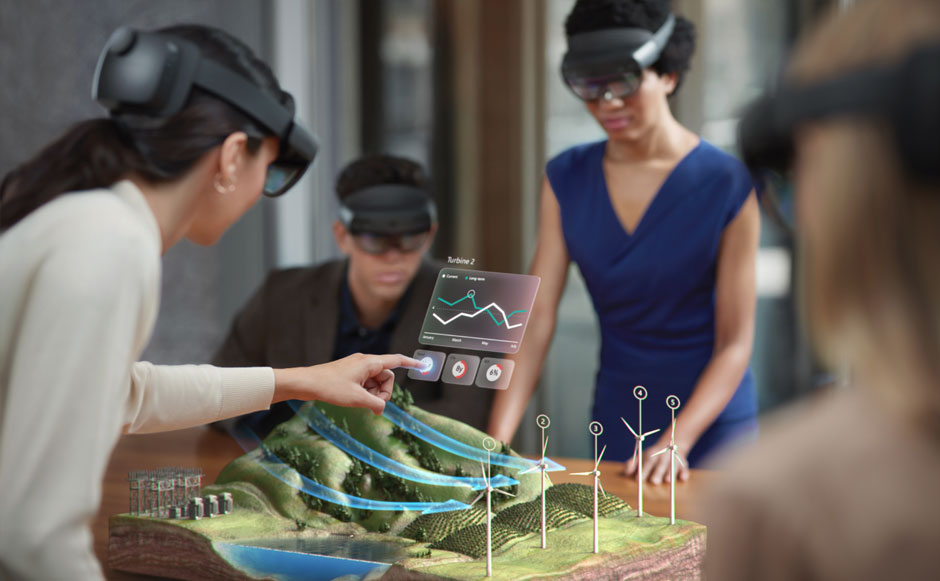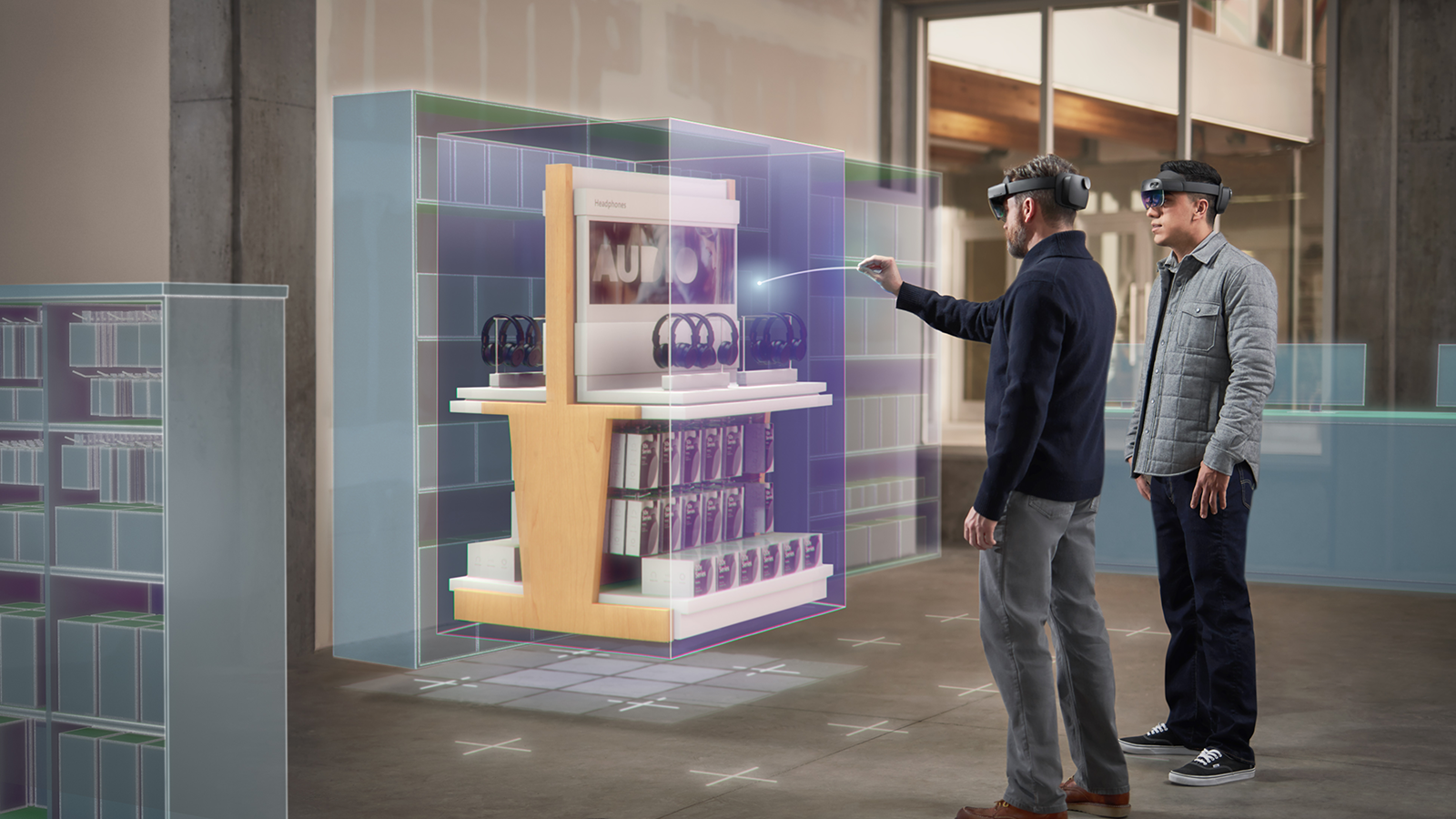Understand holograms
Holograms and holographic experiences aren't science fiction anymore. In fact, they make up the foundation of all augmented reality applications.
Holograms are digital objects that appear in the world around the user who's wearing a HoloLens headset. They're made of light and sound. You can program holograms to interact with a user's gaze, gestures, or voice input. An example is rotating a digital building plan with the touch of a finger or wave of a hand.

It's important to note that holograms are only part of the augmented reality portion of the mixed reality spectrum. They shouldn't be confused with virtual objects in immersive experiences.
Place holographic content
You can place holograms in a specific location within an augmented reality space. Your users can then walk around or even away and have the hologram stay in place. If you're creating a more interactive interaction, holograms can be set to follow a user, tagging along at a relative distance no matter where they are. You can even add a spatial anchor to have your application remember where you placed a hologram, effectively pinning it in place for you to come back to later.

One of the most wonderful aspects of holograms and augmented reality is that they can appear to interact with the physical world. For example, you can place a holographic ball above a table in the real world and have it bounce when a user makes a gesture or says the word "bounce." Adding sound effects or occlusion behind real-world objects can give your holograms added physicality and realness.